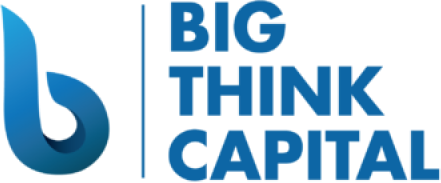Surviving the Financial Tsunami: Navigating Small Business Loans and Working Capital Management in the Face of Rising Interest Rates and Inflation
Estimated reading time: 6 minutes
- Understand the impact of rising interest rates on borrowing costs.
- Explore alternative financing options for increased flexibility.
- Build a cash reserve to weather economic fluctuations.
- Stay informed on trends in small business lending.
- Consult with experts to make informed financial decisions.
Table of Contents
- Understanding Rising Interest Rates and Inflation
- The Impact on Small Business Financing
- Practical Strategies for Surviving the Financial Tsunami
- Staying Informed: Trends in Small Business Lending
- Embracing Financial Resilience
- Conclusion
- FAQ
Understanding Rising Interest Rates and Inflation
The Federal Reserve has implemented a series of interest rate hikes to combat high inflation, which has reached levels not seen in decades. As of 2025, the average interest rate for business loans is projected to remain elevated, making borrowing more expensive for small businesses. According to the Federal Reserve Economic Data (FRED), the benchmark interest rate is expected to hover around 5.5% throughout 2025.
This environment creates challenges for business owners, particularly those looking to expand, invest in new equipment, or manage daily operational costs. Understanding the impact of these interest rate hikes is crucial for any business owner contemplating a loan.
The Impact on Small Business Financing
- Cost of Borrowing: The increase in interest rates significantly raises the cost of borrowing. For example, a small business seeking a $100,000 loan with a 10-year term might pay an additional $6,000 in interest due to the increase. Understanding how interest rates affect total debt obligations is essential.
- Tightened Lending Standards: Lenders are more cautious in a high-rate environment, leading to stricter lending criteria. Small businesses with marginal credit scores or insufficient revenue may face challenges securing funding.
- Shift to Alternative Financing: Many small business owners are turning to alternative financing options. Products such as merchant cash advances, lines of credit, and working capital advances are becoming popular due to their flexible terms. At Big Think Capital, we specialize in these solutions, offering quick access to funds when traditional methods may fall short.
Practical Strategies for Surviving the Financial Tsunami
To effectively navigate the complexities of this financial landscape, small businesses can take several actionable steps.
- Evaluate Your Financial Position Frequently: Consistent financial evaluations will help you understand where you stand against industry benchmarks. Regularly review key metrics like cash flow, profit margins, and expenses.
- Build a Cash Reserve: Establishing a cash reserve can provide a safety net during uncertain times. Aim to cover at least three to six months of operating expenses to withstand economic fluctuations.
- Optimize Your Loan Structure: When seeking financing, consider the terms carefully. If you must borrow, pursue loans with shorter terms to minimize interest payments or choose fixed-rate loans to lock in lower rates before they rise further.
Staying Informed: Trends in Small Business Lending
As we progress through 2025, it is essential to stay updated on the latest trends in small business lending. Here are several noteworthy developments to keep an eye on:
- FinTech Dominance: Financial technology companies continue to disrupt the lending space with streamlined applications and rapid funding timelines. Many small businesses are relying on these platforms as a primary source of financing.
- Focus on Sustainability: Investors and lenders increasingly prioritize sustainability in their funding decisions. Small businesses pursuing eco-friendly practices may find additional funding opportunities through grants or low-interest loans aimed at promoting sustainable initiatives.
- Personal Connections Matter: In a world increasingly driven by technology, the value of personal relationships remains paramount in finance. Cultivating relationships with lenders and financial advisors can lead to favorable terms and access to better financing options.
Embracing Financial Resilience
To survive and thrive in the current economic climate, small business owners must be proactive in seeking financial resilience. Here are some final takeaways:
- Diversify Funding Sources: Relying on a single type of financing can be risky. Explore a mix of loans, lines of credit, and alternative funding solutions to ensure access to capital.
- Invest in Financial Education: Take time to educate yourself and your team about available funding options and the nuances of managing cash flow.
- Seek Expert Guidance: When faced with uncertainty, consulting with financing experts can provide clarity. At Big Think Capital, our dedicated team is ready to help you assess your financial needs and explore options.
Conclusion
With the financial landscape shifting rapidly due to rising interest rates and inflation, small business owners must adapt their strategies and explore diverse financing options. At Big Think Capital, we are committed to supporting your business through these challenges with tailored funding solutions and expert advice.
To learn more about how Big Think Capital can assist your business with funding and navigating the world of small business loans, visit us at bigthinkcapital.com or speak with one of our funding experts today. Together, we can turn challenges into opportunities for growth.
FAQ
- What should small businesses do to prepare for rising interest rates?
- How can small businesses improve their chances of securing financing?
- What financing options are available for small businesses?
What should small businesses do to prepare for rising interest rates?
Small businesses should regularly evaluate their financial positions, build cash reserves, and optimize their loan structures.
How can small businesses improve their chances of securing financing?
Improving credit scores, maintaining consistent revenue, and cultivating relationships with lenders can enhance financing opportunities.
What financing options are available for small businesses?
Options include traditional bank loans, merchant cash advances, lines of credit, and specialized funding from FinTech companies.






